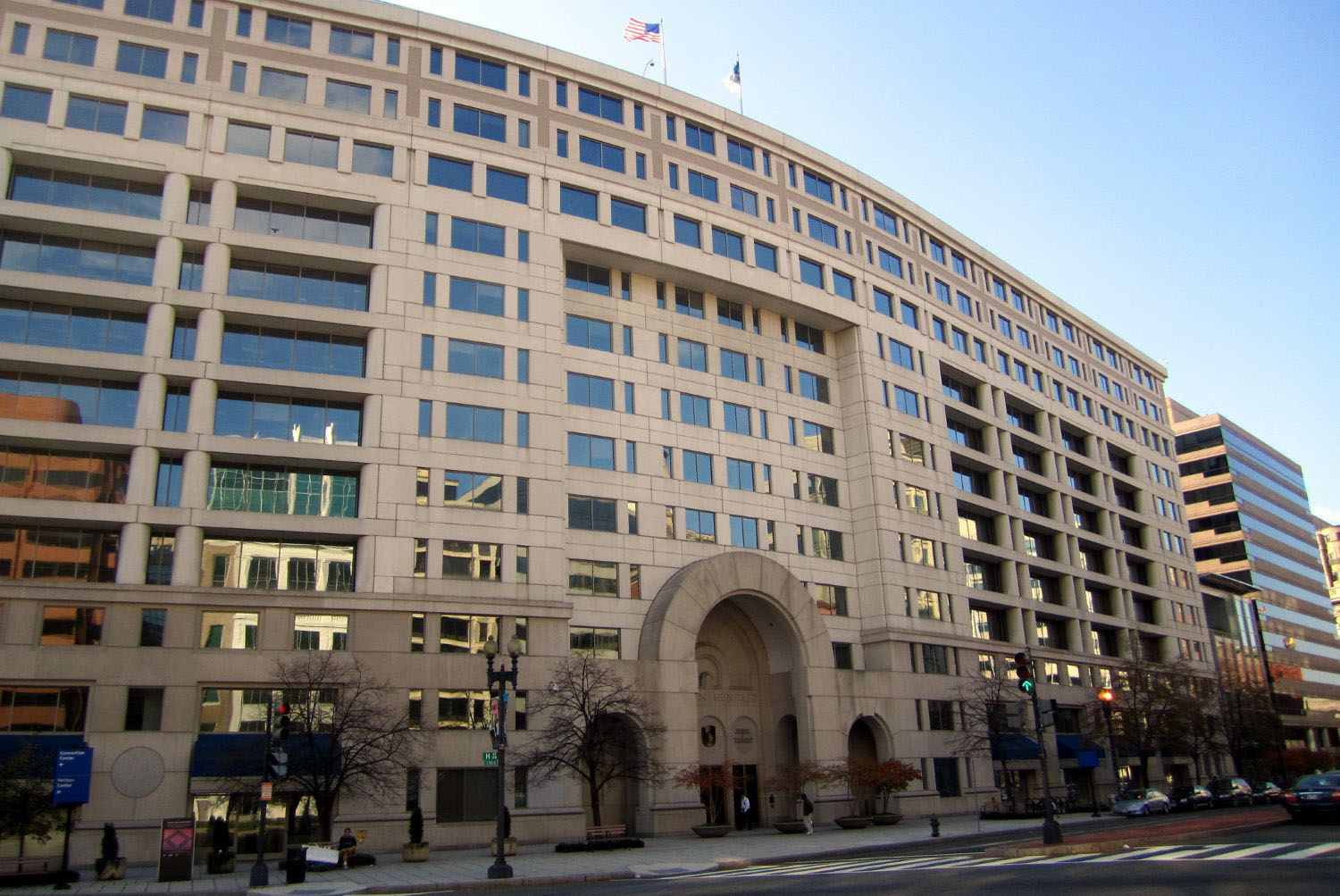More than $3.4 billion inflows into Emerging Markets (EMs) in the week following Brexit—the largest weekly amount on record—looks like good news. Yes, but here is why EMs should not relax in a time of global uncertainty.
The UK referendum to leave the European Union (EU) has had profound effects on global markets and outlooks. Consequentially, the Brexit vote has also forced central banks in advanced economies to re-evaluate their monetary policy plans—and yield-seeking investors are taking notice.
Last month, the US Federal Reserve voiced concerns that a Brexit decision could adversely affect financial markets and the US economy. Following a “leave” result, most investors do not expect the highly cautious Fed to raise rates in the coming months. In the advanced economies of Europe, where interest rates were never expected to increase in the near future, the chances of tighter monetary policies seem even less likely than before. Facing mounting uncertainty, the Bank of England now contemplates an August interest rate cut to 0.25 percent. The European Central Bank, which has warned that a British withdrawal from the EU would have serious economic effects on the Eurozone, is also expected to remain dovish in its policy decisions. For investors, it is a safe bet to assume that interest rates in the developed world will not be increasing for some time.
The search for yield is back
Due to lower expectations for interest rate hikes in developed economies, investors have renewed their search for yield and strong capital inflows have been pumping into Emerging Markets (EMs). The week following the referendum, EM bond funds received more than $3.42 billion, the largest weekly inflow on record since JP Morgan began tracking the data in 2004. The Goldman Sachs Financial Conditions Index shows that EMs performed better in June than they had at any other time in the past five years. EM stocks have also fared very well, with the MSCI Emerging Markets Index up 7.7 percent since June 27. As further evidence of an increase in demand for EM assets, one can look to the recent appreciation of several EM currencies. Over the past two weeks, the Indian Rupee and Chilean Peso appreciated by 3% while the South African Rand appreciated by more than 6 percent. Even in Brazil, in the midst political and economic troubles, the Real has appreciated around 3-4 percent.
Are these capital inflows good or bad news?
At first glance, large capital inflows to EMs might look as great news, especially in the context of large current account deficits and increased external financing needs in many countries. After all, in the pre-Brexit period, the norm was capital outflows from Ems. But are these inflows really good news? In my opinion, not necessarily. First, it is critical that EM central banks recognize that the current increase in inflows is most likely a temporary phenomenon. The Brexit event (together with a disappointing growth outlook in the US) has merely delayed the Fed increases in its policy rate. Even after the Brexit vote, Fed Chair Janet Yellen indicated that the US still plans on raising the interest rates sooner rather than later. With this in mind, EM central banks should consider foreign exchange interventions to contain exchange rate volatility. As a case in point, Peru’s Central Bank has been able to limit the appreciation of its currency and returned the sol to its pre-Brexit value.
Second, and more importantly, these temporary inflows may wrongly take pressure off policymakers to act on the real issue for EMs: increasing productivity via structural reforms. It is essential to understand that this latest increase in appetite for EM assets is based on investors’ portfolio re-balancing given higher volatility in international capital markets and not on an increase in the fundamental value of EMs as an asset class. The more sustainable way to increase capital inflows is by implementing structural reforms that make EMs more attractive, independently of short-term external shocks in the global economy. Among these policy reforms, increased flexibility in labor markets, reduction in red tape and bureaucratic procedures to facilitate private investment and improvements in educational achievements stand out.
Thus, Brexit should be seen as an opportunity and a wake-up call for policymakers to implement long-term enhancing reforms before US interest rates rise and investors’ assessments about the attractiveness of EMs changes once again.
Una semana después de Brexit, ingresaron más de 3.4 mil millones de USD a los Mercados Emergentes (EMs por sus siglas en inglés)—la entrada semanal registrada más grande. A pesar de que, en principio, esto parece una buena noticia para los EMs, estos no deberían despreocuparse en tiempos de incertidumbre global.
El referéndum del Reino Unido para dejar la Unión Europea (UE) ha tenido efectos significativos sobre los mercados globales y sus perspectivas. En consecuencia, el resultado del Brexit también ha forzado que los bancos centrales de los países avanzados reevalúen sus planes de política monetaria—y los inversionistas que buscan mayor rentabilidad lo están notando.
El mes pasado, la Reserva Federal de los Estados Unidos expresó sus preocupaciones respecto a cómo Brexit podrían tener un efecto negativo sobre los mercados financieros y la economía americana. Después de la decisión del Reino Unido para dejar la UE, la mayoría de inversionistas no esperan que la Reserve Federal aumente las tasas de interés en los próximos meses. En las economías avanzadas de Europa, donde no se esperó que las tasas de interés se incrementen en el futuro cercano, la probabilidad de una política monetaria más restrictiva parece aún menor. Frente a una mayor incertidumbre, el Banco de Inglaterra ahora contempla una reducción de la tasa de interés a 0.25 por ciento. También se espera que el Banco Central Europeo, el cual advirtió que la salida del Reino Unido de la Unión Europea tendría efectos económicos considerables sobre la Eurozona, mantenga una posición prudente respecto a sus decisiones de política. Para los inversionistas, es una apuesta segura asumir que las tasas de interés en las economías avanzadas no aumentarán durante algún tiempo.
El apetito por rendimiento está de vuelta
Debido a las menores expectativas de un incremento de las tasas de interés en las economías desarrolladas, los inversionistas han retomado su apetito por mayores rendimientos, generando una fuerte entrada de flujos de capitales en los EMs. La semana después del referéndum, los fondos de bonos de los EMs recibieron más de 3.42 mil millones de USD, la entrada semanal de capitales más grande desde que JP Morgan comenzó a registrar esta información desde el 2004. El Índice de Condiciones Financieras de Goldman Sachs muestra que los EMs reportaron su mejor desempeño en junio, respecto a cualquier otro mes en los últimos cinco años. Las acciones en EMs también han registrado mejoras: el Índice MSCI de EMs subió 7.7 por ciento desde el 27 de junio. Para más evidencia acerca de la mayor demanda de activos en EMs, uno puede observar las apreciaciones de varias monedas en EMs. Durante las últimas dos semanas, la rupia india y el peso chileno se han apreciado en 3 por ciento, mientras que el rand sudafricano se apreció en más de 6 por ciento. Incluso en Brasil, el cual se encuentra en medio de volatilidades políticas y económicas, el real se apreció entre 3 y 4 por ciento.
¿Esta entrada de flujos de capitales es una buena o mala noticia?
A primera vista, esta entrada de flujos de capitales a EMs parece una buena noticia, especialmente en el contexto de mayores déficits de cuenta corriente y mayores necesidades de financiamiento externo en varios países. Después de todo, antes de Brexit, los EMs estaban experimentando una salida de flujos de capitales. Pero, ¿esta entrada de flujos de capitales es una buena noticia? En mi opinión, no necesariamente. Primero, es clave que los bancos centrales de los EMs reconozcan que esta mayor entrada de capitales es un fenómeno temporal. Brexit (junto con una perspectiva de crecimiento menor para EE.UU.) simplemente ha retrasado la decisión de la Reserva Federal para aumentar su tasa de interés. Incluso después del Brexit, Janet Yellen, Presidenta de la Reserva Federal, señaló que EE.UU. aún planea en aumentar las tasas de interés mejor antes que después. Con esto en mente, los bancos centrales de los EMs deberían considerar intervenir en el mercado de divisas para contener la volatilidad de los tipos de cambio. Como ejemplo, el banco central de Perú ha sido capaz de limitar la apreciación de su moneda y regresar el valor del sol al de antes del Brexit.
Segundo, y más importante aún, esta entrada temporal de capitales podría reducir los incentivos a los hacedores de políticas para actuar sobre el verdadero problema para los EMs: mayor productividad mediante reformas estructurales. Es esencial que se comprenda que este mayor apetito por rendimiento es resultado de una recomposición de los portafolios de los inversionistas dada la mayor volatilidad de los mercados internacionales de capitales, y no es resultado de un mayor valor fundamental de los EMs como activos. La forma más sostenible de incrementar la entrada de flujos de capitales es mediante la implementación de reformas estructurales. Estas harían a los EMs más atractivos, independientemente de los choques externos de corto plazo en la economía global. Entre estas reformas de política, se destacan una mayor flexibilidad de los mercados laborales, una reducción de la tramitología y las trabas burocráticas para facilitar la inversión privada y la mejora en la educación.
En conclusión, Brexit debería ser visto como una oportunidad y una llamada de alerta para los hacedores de política, respecto a la implementación de reformas de largo plazo antes de que la tasa de interés de EE.UU. aumente y el atractivo de los EMs cambie nuevamente.
Disclaimer
CGD blog posts reflect the views of the authors, drawing on prior research and experience in their areas of expertise. CGD is a nonpartisan, independent organization and does not take institutional positions.





